
Singapore is widely regarded as a safe and stable place, and this security is often taken for granted by its residents. However, it can be intriguing to consider what might happen in the extremely unlikely event of a catastrophic natural disaster, such as a severe earthquake or volcanic eruption, striking Singapore. Of course, this discussion is purely hypothetical and is not intended to incite unnecessary fear or anxiety.
Nevertheless, contemplating these rare but potentially devastating scenarios can be beneficial in preparing for an uncertain future. Typically, the idea of natural disasters only crosses our minds when we read about or watch news reports of such events occurring in other parts of the world. It is not something we frequently consider in relation to our own situation, yet it is important to think about how we might fare if we were to face such challenges ourselves.
Singapore’s geographical location does offer a degree of protection from the more severe impacts of natural disasters. The country is shielded from the full force of strong tropical storms due to its positioning, and its physical distance from major tectonic fault lines significantly reduces the likelihood of experiencing a powerful earthquake or volcanic eruption.
This geographical buffer creates a certain mental distance between us and the potential consequences of these natural disasters. However, it is worth questioning whether Singaporeans, our homes, and our domestic infrastructure are truly resilient enough to withstand such extreme events. While the risk remains low, it is prudent to consider whether our preparations and safeguards are adequate to handle even the most unlikely scenarios.
Do Earthquakes and Volcanoes Pose any Real Threat?
The evidence strongly indicates that Singapore is relatively safe from many natural disasters. It’s easy for people to dismiss discussions about extreme events due to their low probability of occurring. However, it is precisely these rare, high-impact occurrences—often termed “black swans”—that can catch those who are unprepared off guard and result in catastrophic losses. Recent events and new discoveries have underscored that some of these risks might be closer and more plausible than previously assumed.
For example, recent research highlighted in a Straits Times article points to the possibility that Singapore could be impacted by undersea volcanic eruptions in the South China Sea. Historical data reveals that a significant volcanic event occurred in the past involving KW-23612, a volcano situated in the northern region of the South China Sea. This historical mega eruption serves as a reminder that, although Singapore may seem shielded from such natural threats, emerging evidence suggests that these risks might be more imminent and relevant to us than previously thought.
Understanding these potential threats is important because they prompt us to consider and prepare for scenarios that, while currently unlikely, could still have substantial impacts on our safety and infrastructure. By staying informed about these risks and evaluating our preparedness, we can better equip ourselves for any unforeseen challenges that may arise.
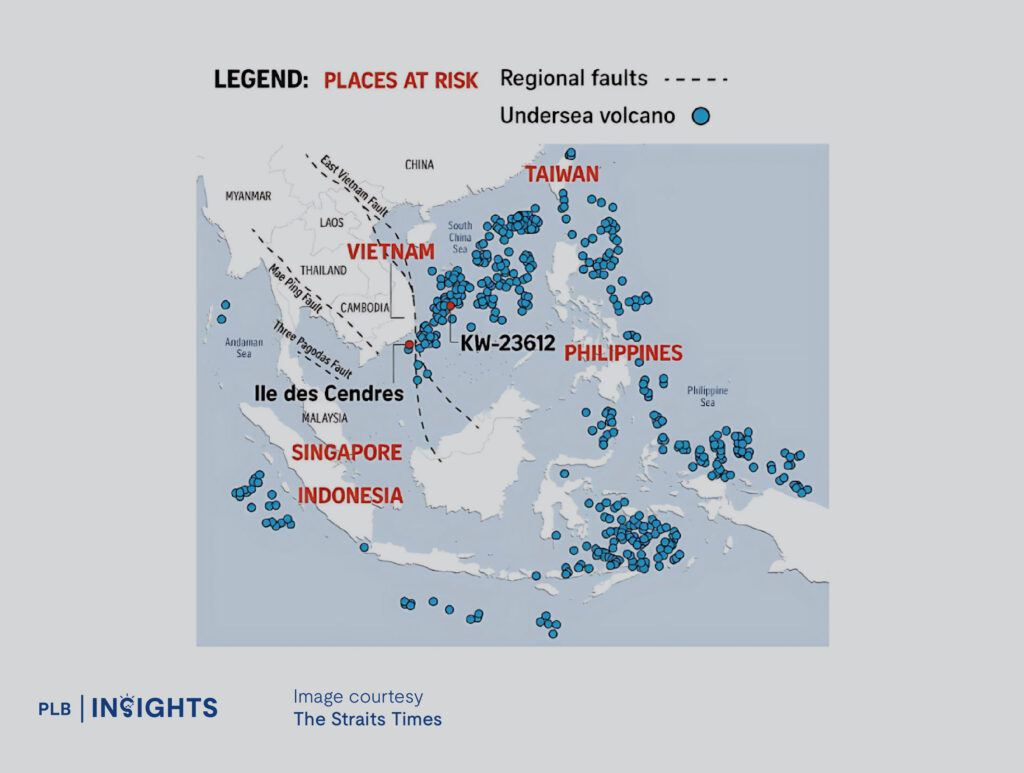
A mega volcanic eruption, while not necessarily catastrophic on a global scale, could still significantly disrupt daily life in Singapore. An undersea eruption of such magnitude has the potential to generate mini-tsunami waves and powerful currents, which could interfere with water traffic along Singapore’s east coast. Furthermore, volcanic ash from the eruption could be carried by winds across the island, leading to air pollution and necessitating cleanup efforts to remove the ash from surfaces and infrastructure.
Another concern to consider is the potential for a major earthquake in the region. For instance, on August 8, Japan issued its first mega quake alert following an uptick in the frequency of strong earthquakes. Although this alert has since been rescinded, the initial announcement led to a significant reaction: many prospective tourists cancelled their trips to Japan, and local residents engaged in panic buying of supplies in anticipation of potential shortages.
While Singapore is geographically distant from Japan and unlikely to directly experience such seismic events, the reactions to these disasters elsewhere can have broader implications. The ripple effects of such natural disasters can be felt globally, affecting not only those directly involved but also impacting international economies and travel industries. Singapore, having benefited from its political stability and relative geographical safety, might find itself unprepared if faced with the indirect consequences of a major earthquake or volcanic eruption in the region.
In such scenarios, Singaporeans may face challenges in adapting to the unexpected disruptions and consequences of regional natural disasters. This highlights the importance of being aware of potential risks and considering how best to prepare for and mitigate the effects of such events, even if they seem unlikely to occur within our immediate vicinity.
Occasionally, significant seismic activity, such as large earthquakes or volcanic eruptions occurring in nearby Sumatra, can result in tremors that are felt in Singapore. Residents who were in Singapore during notable seismic events in the years 1994, 2004, 2007, and 2009 might recall specific instances when they experienced such tremors. During these times, some individuals observed noticeable effects such as the water in their glasses swaying or the lights hanging from the ceiling swinging gently.
These subtle physical manifestations serve as reminders that while Singapore is geographically shielded from the most severe impacts of distant earthquakes, it is still susceptible to minor tremors that can be felt from time to time. Such occurrences highlight the interconnectedness of our region and the ripple effects of geological events occurring in neighbouring areas. Although these tremors are generally mild and do not cause significant damage, they underscore the fact that Singapore is not entirely immune to the influences of natural disasters occurring in the surrounding regions.
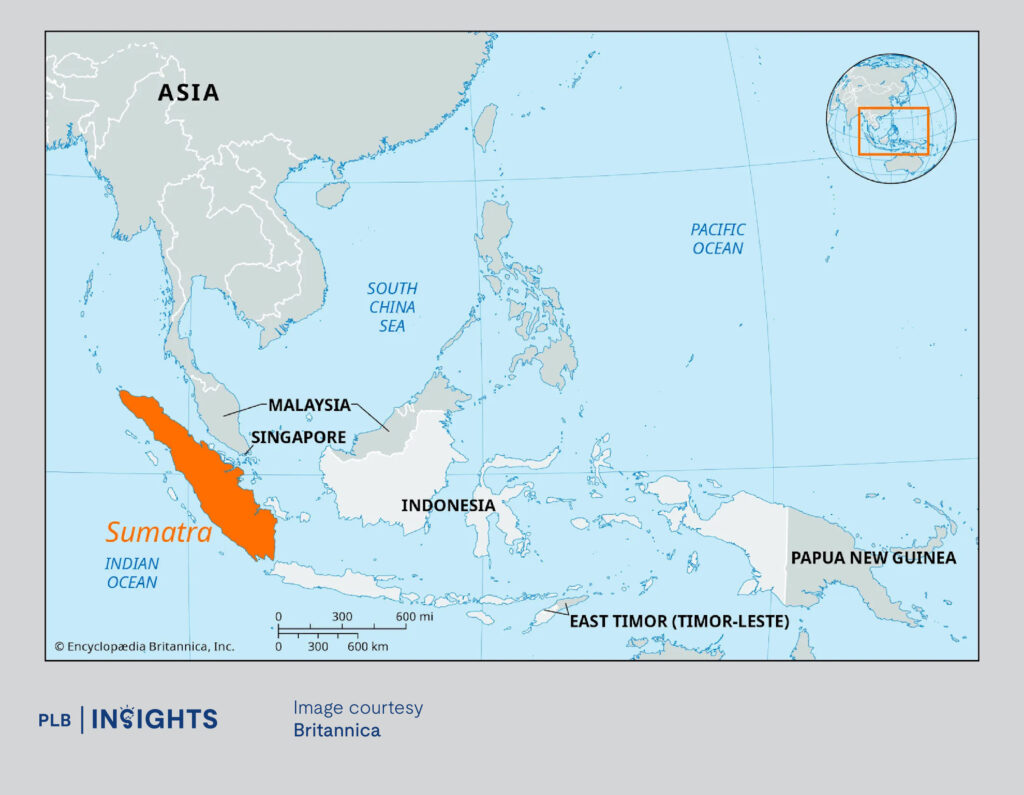
In the unlikely event of a mega earthquake occurring in Sumatra, Singapore would likely experience tremors of a much greater intensity than those it has encountered in the past. Historically, earthquakes in Sumatra with magnitudes ranging from 6.5 to 7.0 on the Richter scale have been significant enough to cause concern among Singapore residents. Many people during these times reported feeling strong shaking, leading some to fear that the buildings they were in might be on the verge of collapsing.
In response to these seismic events, the Building and Construction Authority (BCA) of Singapore undertook thorough inspections of affected structures to ensure their safety. Engineers assessed the condition of buildings following the tremors, and their evaluations consistently confirmed that the structures were secure and not at risk of collapse. Despite these reassurances, the intensity of the tremors experienced during past events was relatively mild compared to what might be expected from a much larger and more powerful mega earthquake.
Given that the potential impact of a mega earthquake would involve significantly stronger tremors, there remains some uncertainty regarding how well Singapore’s buildings would withstand such an extreme event. While the existing infrastructure has been proven resilient in the face of moderate seismic activity, the magnitude and force of a mega quake could present challenges that have not yet been tested. As such, it is crucial to consider how our buildings and overall infrastructure might fare under these more severe conditions and to prepare accordingly.
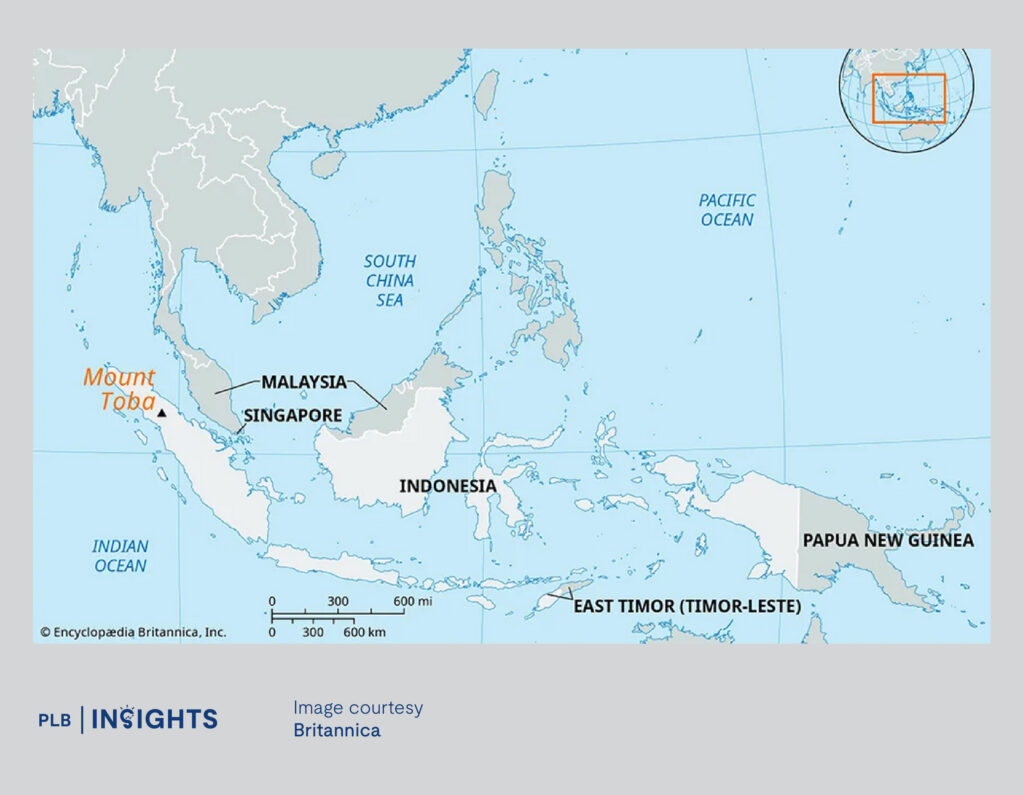
The greatest concern regarding a mega volcanic eruption in the region would likely stem from Mount Toba, a dormant supervolcano located approximately 570 kilometres away from Singapore in the north-central part of Sumatra. Despite its current state of inactivity, Mount Toba has a notable and historically significant past. More than 70,000 years ago, this ancient volcano experienced one of the largest and most powerful eruptions in human history.
The eruption of Mount Toba was so immense that it is believed to have had a profound global impact, contributing to a dramatic climate event known as the Toba catastrophe theory. This theory posits that the eruption caused a significant volcanic winter, leading to a substantial drop in global temperatures and triggering what is considered one of the Earth’s most severe ice ages. The volcanic ash and gases released during the eruption likely had far-reaching effects on the climate, contributing to widespread environmental changes that impacted life on Earth.
Although Mount Toba is currently dormant and shows no signs of imminent eruption, its historical record as a supervolcano with such a massive eruption underscores the potential risks associated with its future activity. The sheer scale of its past eruption serves as a reminder of the potential for significant global impacts should such a supervolcano become active again. As such, while the likelihood of a new eruption remains low, the historical significance of Mount Toba’s past activity highlights the importance of monitoring and understanding the potential risks associated with dormant supervolcanoes.
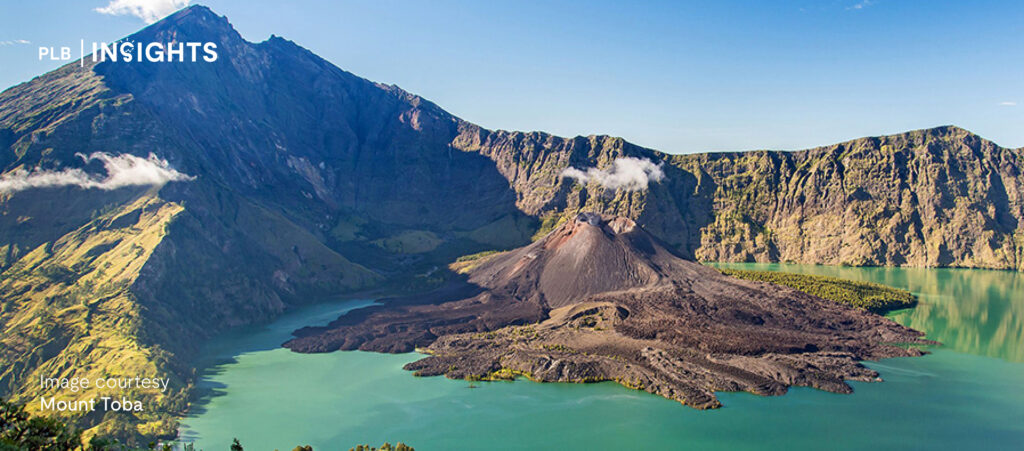
No one can predict with absolute certainty when dormant volcanoes might become active again, as this is inherently unpredictable. However, it is important to be aware that there is a dormant supervolcano relatively close to us, specifically in the north-central part of Sumatra. This supervolcano, Mount Toba, is a significant geological feature that could pose risks in the future.
The reassuring news is that dormant volcanoes do not typically erupt without warning. There are usually a series of observable signs and indicators that precede a volcanic eruption. These signs might include increased seismic activity, such as frequent earthquakes or tremors in the area, which can signal rising magma beneath the Earth’s surface. Additionally, changes in gas emissions, such as increased release of volcanic gases like sulphur dioxide, can be an early warning sign. The ground might also show deformation, with bulging or swelling as magma moves underground.
Monitoring these geological and environmental indicators is crucial for early detection and response. The presence of these warning signs provides valuable time for preparation and potential evacuation measures, should an eruption become imminent. Therefore, while the precise timing of a future eruption cannot be predicted, understanding and monitoring these early warning signals can significantly enhance our ability to respond effectively to potential volcanic threats.
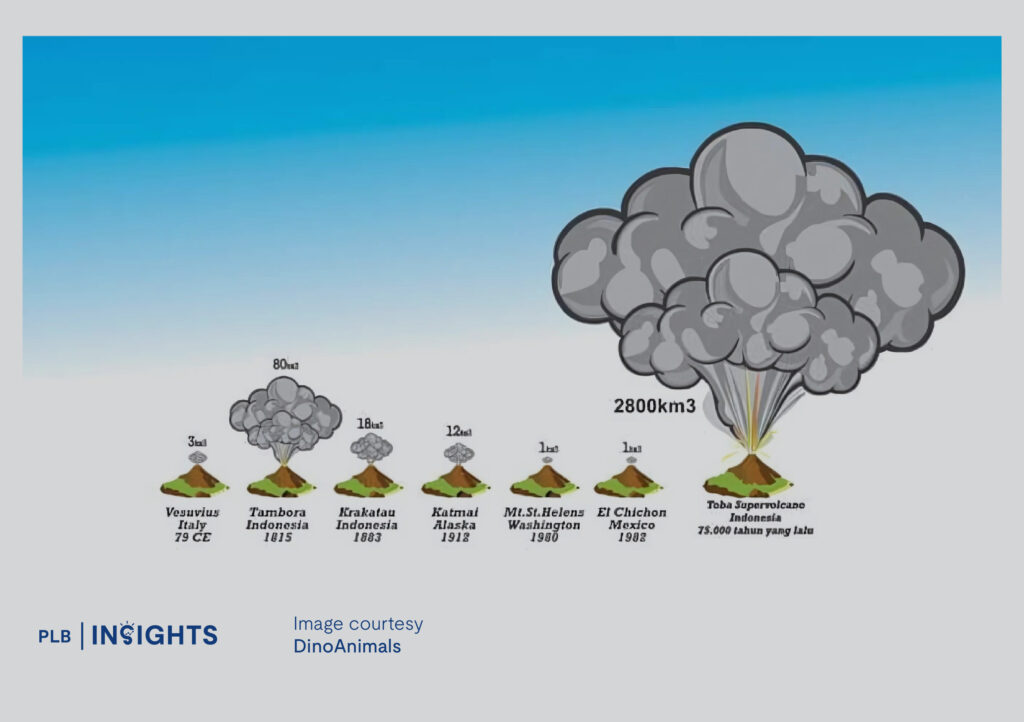
Needless to say, a supervolcano eruption of this scale would definitely spark an end-times vibe. And we would probably have much larger concerns than if our homes are safe. While these concerns are generally hypothetical, history has shown a precedence and the concerns are not totally unfounded or fictional.
How do Singaporean Homes Stand Up to These Threats?
The Singapore government is known for its prudence and excellence in risk management. They are probably a few steps ahead of what Singaporeans are worried about when it comes to policy planning and solutions to some of the problems or risks posed to Singapore and its residents.
Likewise, it is not surprising that Singapore’s buildings would be retrofitted with some sort of a monitoring or alert system when it comes to the risks posed by natural disasters to the building’s structural integrity. For instance, Singapore’s Land Transport Authority (LTA) has been installing sensors for tremors at various transit locations, including some MRT stations, bridges, and flyovers. Such monitoring systems help the authorities to determine the extent to which transport infrastructure is affected by nearby natural disasters and to make sure that they are properly maintained.
Building earthquake resistant buildings is very costly. When it comes to a city like Singapore, balancing low probability risks and construction costs is crucial. Around 2016, the BCA adopted a new building code that helped improve the quake resistance of buildings. While this might not be as impressive as the buildings in Tokyo which can withstand frequent quakes, what Singapore currently has is more than enough to survive quakes in nearby Sumatra.
A media statement from the BCA in 2017 advocates for the efficacy of the SMS alert system for tremors and reassures Singaporean residents that buildings in Singapore are strong enough to withstand distant earthquakes. The Ministry of National Development has also put out a statement on the safety of buildings in Singapore, emphasising how buildings in Singapore could withstand up to 143 km/hr gusts (around a Category 1 Tropical Storm). The 2004 earthquake in Aceh around 1,000 km away from Singapore, which measured 9.0 on the Richter scale also did not damage buildings in Singapore.
To sum up what we have learnt, Singapore is generally safe from distant natural disasters. This includes earthquakes and eruptions around nearby Sumatra and the South China Sea. Despite the low risks, Singapore has a tremor detection system and a robust construction standard for buildings to be able to withstand what Singapore will realistically experience.







